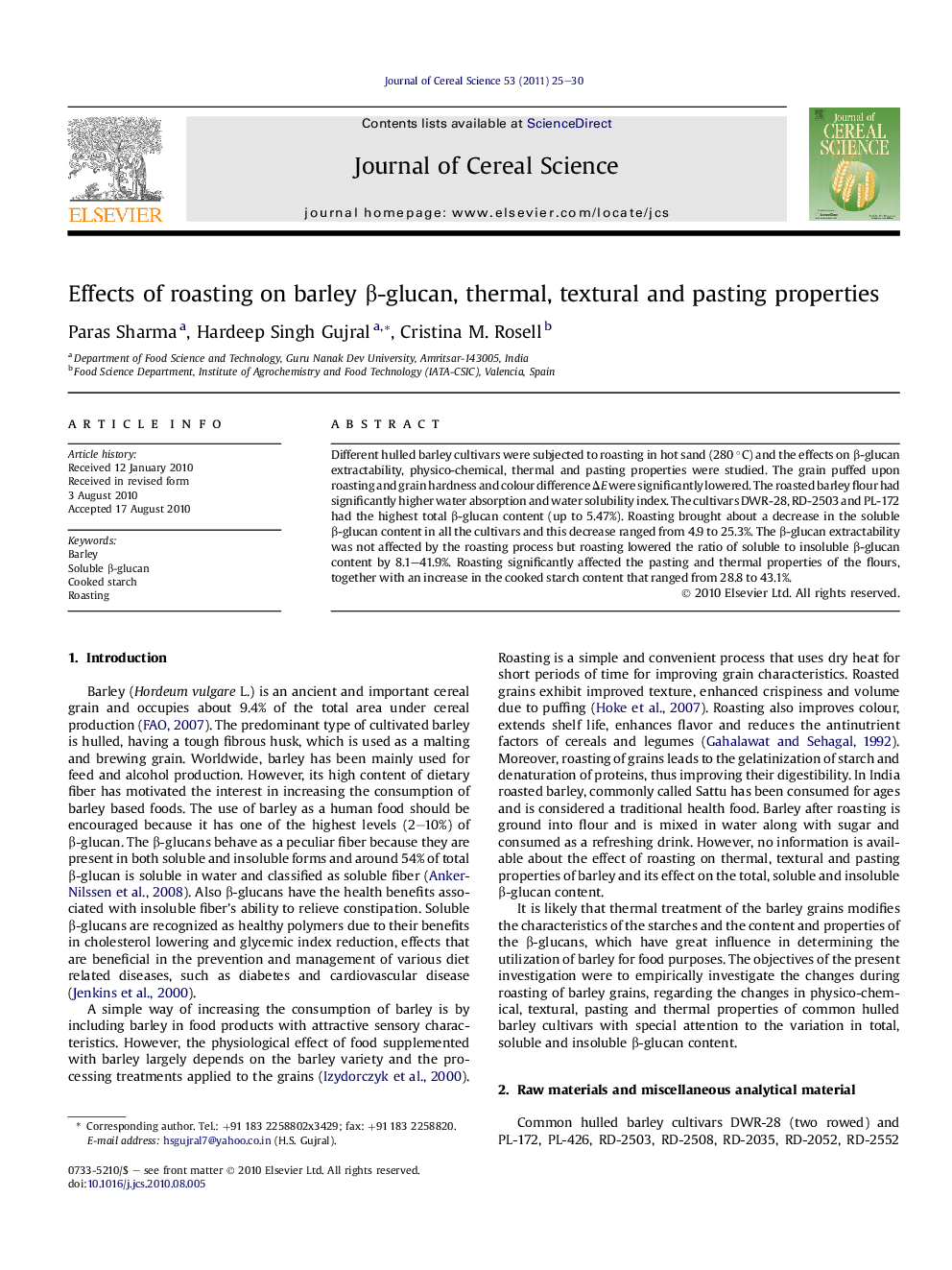| Article ID | Journal | Published Year | Pages | File Type |
|---|---|---|---|---|
| 6378175 | Journal of Cereal Science | 2011 | 6 Pages |
Abstract
Different hulled barley cultivars were subjected to roasting in hot sand (280 °C) and the effects on β-glucan extractability, physico-chemical, thermal and pasting properties were studied. The grain puffed upon roasting and grain hardness and colour difference ÎE were significantly lowered. The roasted barley flour had significantly higher water absorption and water solubility index. The cultivars DWR-28, RD-2503 and PL-172 had the highest total β-glucan content (up to 5.47%). Roasting brought about a decrease in the soluble β-glucan content in all the cultivars and this decrease ranged from 4.9 to 25.3%. The β-glucan extractability was not affected by the roasting process but roasting lowered the ratio of soluble to insoluble β-glucan content by 8.1-41.9%. Roasting significantly affected the pasting and thermal properties of the flours, together with an increase in the cooked starch content that ranged from 28.8 to 43.1%.
Related Topics
Life Sciences
Agricultural and Biological Sciences
Agronomy and Crop Science
Authors
Paras Sharma, Hardeep Singh Gujral, Cristina M. Rosell,
